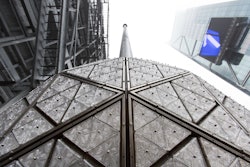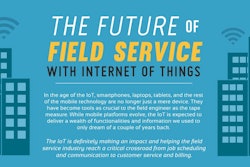The futuristic hype over 3D printing has outshined applications that are already transforming the manufacturing world. While the media speculates about 3D printed guns, organs and food, firms are using 3D printers to overcome a less ‘sexy’ challenge: replacement parts for aging production lines.
In a typical factory, unplanned downtime is extremely expensive. In a survey conducted by Nielsen Research, automotive executives reported that downtime cost an average of $22,000 per minute — some respondents put the figure as high $50,000 per minute. Not surprisingly, most manufacturers invest in predictive maintenance and aim to replace worn down parts before they cause a breakdown.
However, finding replacements parts can be a nightmare. OEMs discontinue replacement parts after an arbitrary number of years, perhaps hoping that companies will upgrade to their newest machinery. So to procure replacement parts, factories turn to metal stamping companies and injection molders who, understandably, have high order minimums. Preparing molds and shapes is a poor investment unless the customer is going to order tens of thousands of units. Consequently, factories end up paying for a surplus of replacement parts, which take weeks to arrive and clog up inventory. If a shipment is delayed, a breakdown could turn into a multimillion dollar problem.
Enter 3D printing. Rather than buying 30,000 replacement parts, a factory can order the quantity it actually needs from a 3D printing firm. While a single 3D printed part often has a higher per unit cost than a stamped or molded equivalent (at least today), 3D printing offers several important advantages.
First, most 3D printing companies do not have order minimums. Unlike injection molders who must spend thousands on molds, 3D printers incur the same costs per unit whether they print 10 or 10,000 parts. In other words, they can sell 10 parts and still make money.
Second, 3D printers can teach old parts new tricks. If a part repeatedly breaks, a 3D printing specialist can digitally reverse engineer and strengthen the part without the steep costs of prototyping and new manufacturing.
Third, 3D printers can generate new parts in a matter of days or less if necessary. Thus, as long as factories perform predictive and preventive maintenance, they can procure replacement parts before they lose $22,000 per minute to a breakdown. Ordering and hording excessive numbers of parts is unnecessary.
As the founders of 3Discovered, an exchange platform that facilitates the buying, selling and making of commercial-grade 3D printed parts and products, we’ve helped industrial firms weave 3D printing into their supply chain. One of our clients, Advanced Technology Services (ATS), a specialist in factory maintenance and IT services, provides an outstanding case study.
ATS provides predictive and preventive maintenance for large manufacturers such as Caterpillar, Siemens, Georgia-Pacific, Panasonic and Stanley Black & Decker. Their technicians replace parts on production lines all the time; indeed, ATS used to horde thousands of parts for their customers to ensure that technicians were always prepared.
So in Spring 2015, when ATS decided to try 3D printing, they shipped us a box of common replacement parts. We created CAD drawings, printed prototypes to test for quality and then loaded the final products into a digital storefront. When ATS needs a part, they can now select a quantity, choose a 3D printing company from our network of so called “service bureaus”, and see the parts a few days later. As we digitize more and more replacements parts, ATS can reduce order quantities and inventory costs without jeopardizing their ability to perform timely maintenance.
ATS has also used 3D printing to improve replacement parts. For instance, their technicians frequently had to replace a rare drive end that wore down unusually fast. Its thin flange allowed bolts to bend rather easily. The OEM had stopped selling replacements, so ATS used to scour eBay for this part and pay a hefty price.
Rather than print the same, unreliable drive end, we collaborated with their technicians to reengineer a better version. During a video conference, our engineers screen-shared our software and changed the drive end in real-time, based on the technicians’ guidance. By the end of the video conference, we had converted a flimsy, aluminum drive end into a stainless steel version with thicker flanges and fillet welded joints. ATS could order the new part by the end of the call.
Normally, it takes weeks or months to retool a drive end. With 3D printing software, we did it in the space of an average meeting. In this case, the new drive end is half as expensive as its predecessor. Today, ATS can order dozens of different 3D printed parts with one mouse click or tap on a mobile device. Their team can prevent breakdowns with higher quality parts, fewer hassles and lower costs.
3D printing is no longer a novelty. Companies like ATS are using 3D printed parts to maintain production lines for Fortune 500 and Global 2000 manufacturers. For any supply chain impeded by minimum order quantities, aging inventories, ‘long tail’ products and legacy machines, 3D printed parts will become the new normal.
In the short term, 3D printing will provide a competitive edge for industrial firms that spend an outrageous amount of time and money to procure one little replacement part. In the long term, 3D printing will shift the global balance of manufacturing. Labor costs and regulations brought the bulk of manufacturing to the developing world. However, commodity costs are global — a 3D printer in China incurs the same costs as one in the U.S. Thus, as the technology continues to develop 3D printing will allow developed countries to bring production home. Before long, we will 3D print active production parts (as well as replacement parts for production lines loaded with 3D printers).
Peer Munck is CEO and founder of 3Discovered.























